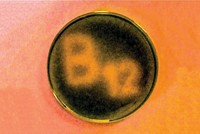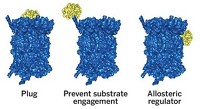Advertisement
Grab your lab coat. Let's get started
Welcome!
Welcome!
Create an account below to get 6 C&EN articles per month, receive newsletters and more - all free.
It seems this is your first time logging in online. Please enter the following information to continue.
As an ACS member you automatically get access to this site. All we need is few more details to create your reading experience.
Not you? Sign in with a different account.
Not you? Sign in with a different account.
ERROR 1
ERROR 1
ERROR 2
ERROR 2
ERROR 2
ERROR 2
ERROR 2
Password and Confirm password must match.
If you have an ACS member number, please enter it here so we can link this account to your membership. (optional)
ERROR 2
ACS values your privacy. By submitting your information, you are gaining access to C&EN and subscribing to our weekly newsletter. We use the information you provide to make your reading experience better, and we will never sell your data to third party members.
Biological Chemistry
Transport Tag Team
Bioinorganic Chemistry: Two-protein complex forms in cells' copper-transport pathway
by Stuart A. Borman
November 10, 2009

A complex of two proteins forms transiently on the pathway that cells use to transport copper. The finding may have implications for understanding Cu-dependent diseases such as Wilson disease.
Cu is essential as an oxidation-reduction cofactor for cell processes. Too much of it is toxic, and too little causes anemia. To maintain a fine balance, cells have a complex system to traffic Cu, a process that is not fully understood. In one part of this system, Wilson disease protein (WD) exports Cu from cells after getting it from the copper-chaperone protein Atox1.
Now, Pernilla Wittung-Stafshede of Umeå University, in Sweden, and coworkers at Rice University show that Atox1-to-WD Cu delivery takes place via a Cu-bridged heterocomplex that the two proteins form transiently (J. Am. Chem. Soc., DOI: 10.1021/ja9058266). They find that one particular Atox1 residue, lysine-60, is essential for the complex to form and thus for Cu transfer to occur.
This is the first experimental verification that this particular protein-protein interaction occurs directly on the Cu-transfer pathway in cells, Wittung-Stafshede notes. "Computer simulations support the experimental data and reveal energetics for the heterocomplex," she says. "Better understanding of this Cu-transfer pathway mechanistically and chemically can eventually help human health."





Join the conversation
Contact the reporter
Submit a Letter to the Editor for publication
Engage with us on Twitter